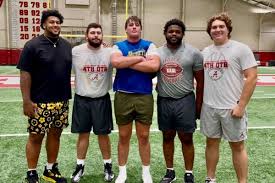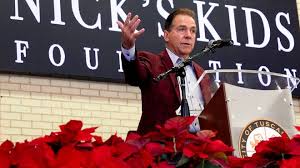In the world of college athletics, few conferences boast the weight and dominance of the Southeastern Conference (SEC). Whether it’s football, basketball, or baseball, the SEC is synonymous with power, pride, and postseason supremacy. Year after year, their teams grind through regular-season battles, only to become the immovable obstacles standing between dreamers and destiny.
But not this time.
This time, someone else wrote the ending.
This time, a juggernaut—let’s call them the Powerhouse—had their eyes locked on something far greater than just a Final Four appearance or a feel-good Cinderella run. This was a mission forged in steel and sweat, an unrelenting march through March and into April that would lead to a championship. To get there, however, one final roadblock remained: the last SEC team still standing.
And it was time to eliminate them.
The SEC’s Path to the Brink
Let’s rewind. The SEC had started this tournament with muscle—five teams in the field, two top-three seeds, and talent oozing from every position. Fans from Gainesville to Tuscaloosa believed this could be another all-SEC showdown in the Final Four. Some even dreamed of an all-SEC national title game.
But dreams began to unravel. One by one, the giants fell—stunned by buzzer-beaters, outdueled by mid-majors hungry for respect, or simply worn down by the pressure. Yet one team held firm—let’s call them the Titans, a program rich with tradition, anchored by a coach with SEC rings and a fan base as vocal as any in the country.
By the time the Final Four arrived, it was Powerhouse vs. Titans. The rest of the country watched, anxious and hopeful, ready for someone to finally break through the SEC wall.
The Final Stand: Powerhouse vs. Titans
The game didn’t need hype—it was built in. Powerhouse, with its balanced attack, lethal backcourt, and fearless mindset, had mowed through opponents. They didn’t just win; they overwhelmed. On the other side, Titans were the SEC’s last hope—a battle-tested group that thrived on physicality and emotion.
From the opening tip, it was clear this was going to be a war.
The first half was a chess match. Titans leaned into their strength, hammering the ball inside, drawing contact, and controlling tempo. Powerhouse responded with efficiency and perimeter shooting—driving, kicking, and knocking down threes like clockwork. At halftime, the score was tied 34-34, the crowd on its feet, and the tension palpable.
Then came the second half. And with it, came the run.
With 12:48 left in the game, Powerhouse flipped a switch. It started with a deep three from their senior captain. Then a steal, a fast-break dunk. Then another stop. Another three. Timeout, Titans.
The SEC squad tried to answer, but the legs were heavy. The shots grew shorter. The turnovers increased.
Powerhouse smelled blood.
With under four minutes left, the lead had ballooned to 18. The crowd was roaring. The SEC fans had gone silent.
When the final buzzer sounded, the scoreboard told the tale: Powerhouse 78, Titans 60.
The last SEC team was gone.
A Statement Made
In the locker room, the Powerhouse players weren’t celebrating yet. This was just another step.
“We knew we were going to have to beat someone like them to get where we want to go,” said the team’s head coach. “They represent everything the SEC is known for—toughness, depth, tradition. But we’ve got tradition, too. And we’re writing a new chapter.”
The win was more than a Final Four victory—it was symbolic. The SEC, so often the league that defined college championships, had been swept off the board. The Powerhouse didn’t just defeat the Titans—they dethroned a conference.
The Road to the Title Game
Now, there was one more game to go.
The championship.
On the other side awaited a team every bit as dangerous—let’s call them the Challengers. Built on quickness, defense, and uncanny ball movement, the Challengers had emerged from the other side of the bracket as the nation’s feel-good story. Led by a charismatic coach and a trio of future pros, they’d knocked off a No. 1 seed, survived overtime in the Elite Eight, and won a one-point thriller in the semifinals.
But they hadn’t faced the Powerhouse.
The buildup to the championship game was a firestorm. Pundits debated matchups, fans argued legacies, and the media hyped it as a clash of styles—methodical might vs. frantic flair.
For the Powerhouse, the mission was clear.
“Finish the job.”
The Championship Game: 40 Minutes to Immortality
It started fast. Powerhouse wasn’t interested in feeling things out—they attacked. The same senior leader who lit the fuse against the Titans opened the scoring with a step-back three. Then came the power forward, crashing the offensive glass, bullying his way to an and-one.
But the Challengers weren’t rattled. They responded with pace—pushing the ball, feeding the wings, and forcing Powerhouse to rotate.
Midway through the first half, it was tied again—25-25.
Then came a turning point.
Powerhouse switched to a zone, a look they hadn’t shown in weeks. The Challengers hesitated, probing without attacking. Turnovers followed. Missed threes clanked off the rim.
Powerhouse pounced.
By halftime, the score was 44-34. The Challengers looked stunned.
In the second half, it was all about composure. The Challengers made a push—cutting the lead to four with 11 minutes to go. But Powerhouse never panicked. They executed out of timeouts, hit big shots, and used every second of the shot clock when they needed to.
With 90 seconds left, the dagger came—a corner three from the freshman phenom who had grown up before the nation’s eyes during the tournament.
The crowd exploded. The bench emptied. Confetti prepped.
Final score: Powerhouse 82, Challengers 72.
The Aftermath: Crowning Glory
As the net was cut, the trophy hoisted, and the arena filled with celebratory thunder, the Powerhouse team gathered at center court. Tears, hugs, and wide grins all around.
For the seniors, it was the fulfillment of a promise.
For the coach, it was validation—years of building, recruiting, believing.
For the fans, it was everything.
But most of all, it was a message.
The SEC doesn’t own the postseason anymore. Not this year. Not with this team.
Legacy Written
Every championship has a story. Some are about resilience. Others about revenge. This one was about domination—about beating the best, including the conference that always seemed to get the last word.
By eliminating the last SEC team standing, the Powerhouse didn’t just earn a spot in the title game—they shifted the power dynamic. They stormed into the spotlight and left with a crown.
“This wasn’t about just winning a game,” said the MVP afterward. “This was about changing the narrative. They said we couldn’t do it. We just did.”
What Comes Next?
The question now turns to legacy. Can this team repeat? Can the coach build a dynasty? Will other teams follow this blueprint to finally unseat the long-standing SEC reign?
Recruiting will change. Belief will change. Conference power rankings? They’ll look different now.
One thing is clear: a new standard has been set.
The last SEC squad has fallen.
And someone else just climbed the mountaintop.



